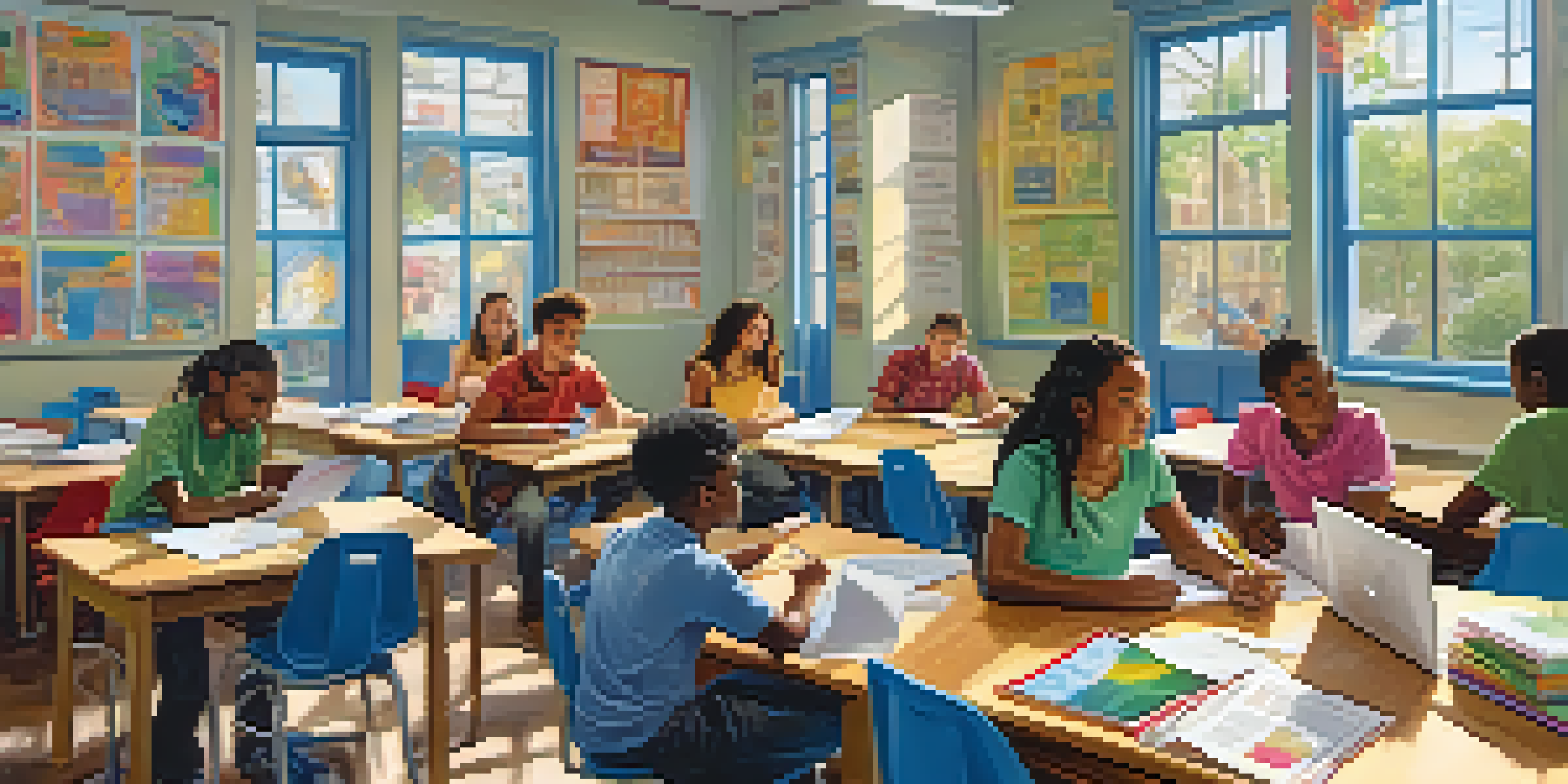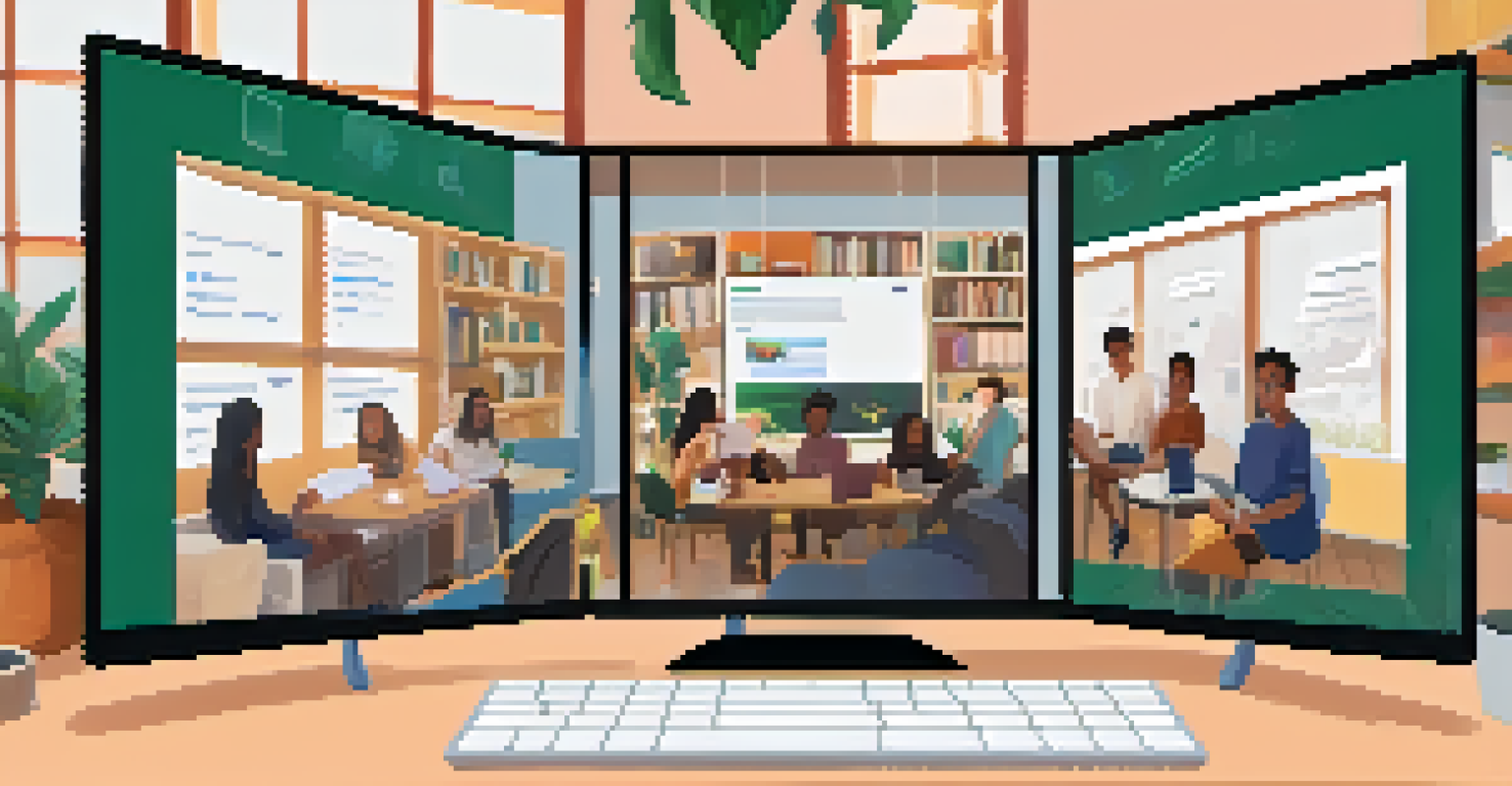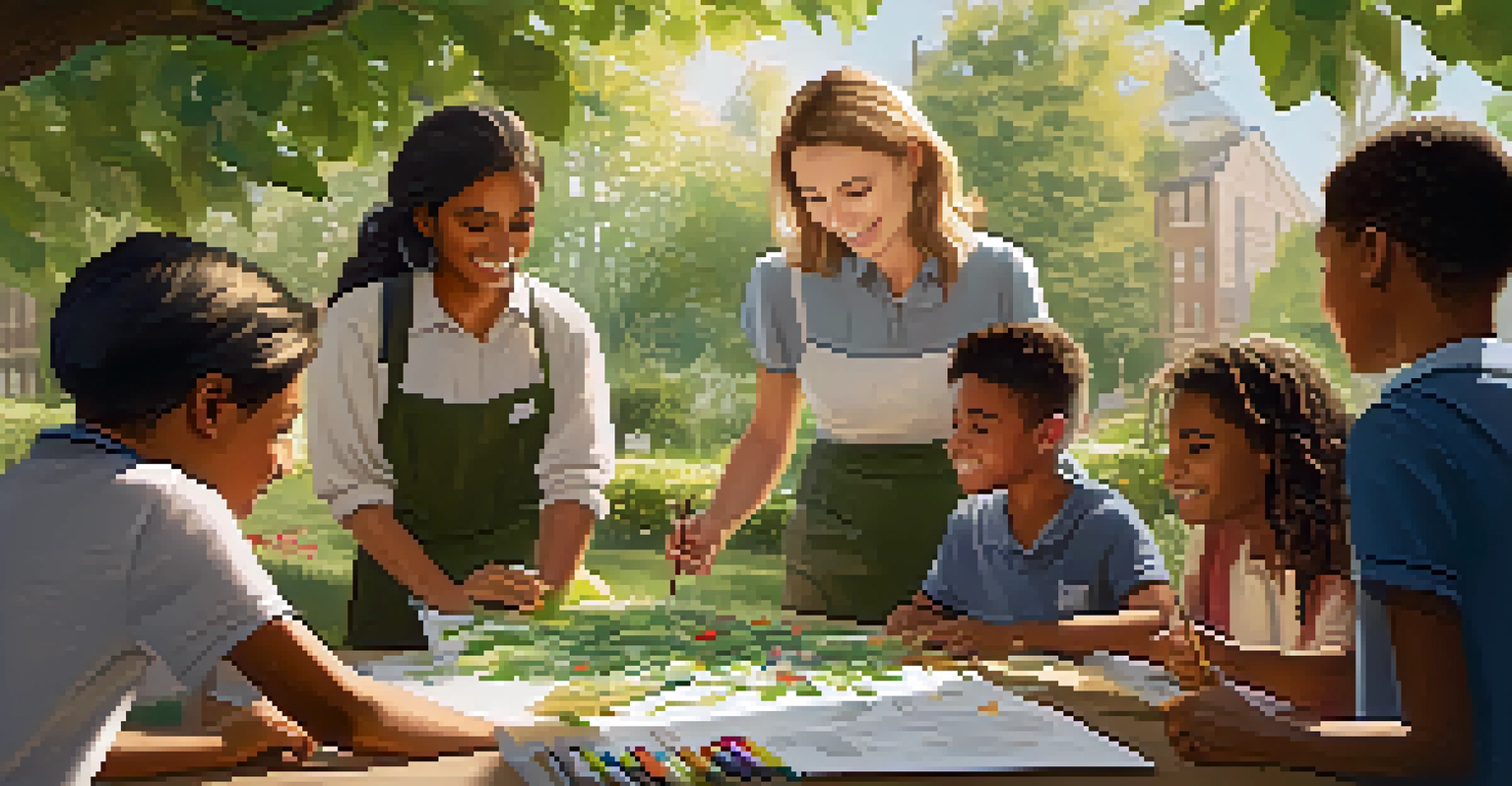Collaborative Learning and Its Influence on Student Engagement

Understanding Collaborative Learning and Its Importance
Collaborative learning is an educational approach where students work together to achieve shared learning goals. This method emphasizes teamwork, communication, and the pooling of resources, creating a dynamic classroom environment. By engaging with peers, students can develop critical thinking skills and deepen their understanding of the material.
Alone we can do so little; together we can do so much.
The importance of collaborative learning lies in its ability to foster a sense of community among students. When learners collaborate, they build relationships that can enhance motivation and make learning more enjoyable. This camaraderie not only supports academic growth but also nurtures social skills that are essential in today’s interconnected world.
Moreover, collaborative learning encourages diverse perspectives, as students from different backgrounds contribute unique ideas and insights. This diversity enriches discussions and promotes a more comprehensive understanding of complex subjects, preparing students for real-world scenarios where teamwork and collaboration are key.
How Collaboration Enhances Student Engagement
Collaboration inherently makes learning more interactive, which is a vital aspect of student engagement. When students work together, they are actively participating in the learning process rather than passively receiving information. This active involvement helps maintain interest and motivation throughout lessons.

Additionally, collaborative learning encourages accountability among students. When working in groups, each member contributes to the team's success, creating a sense of responsibility. This shared accountability often leads to increased effort and commitment, as students want to support their peers and achieve collective goals.
Collaborative Learning Fosters Community
Engaging in collaborative learning helps students build relationships and enhances both academic and social skills.
Furthermore, collaborative environments often lead to richer discussions and deeper exploration of topics. Students ask questions, challenge each other’s ideas, and provide feedback, all of which stimulate critical thinking and enhance engagement. This interactive dialogue keeps students invested in their learning journey.
The Role of Technology in Collaborative Learning
In today’s digital age, technology plays a crucial role in facilitating collaborative learning. Tools like online discussion boards, video conferencing, and collaborative documents allow students to connect and work together, regardless of their physical location. This accessibility broadens the scope of collaboration beyond the traditional classroom setting.
Collaboration allows us to know more than we are capable of knowing by ourselves.
Moreover, technology enables real-time feedback and communication, enhancing the collaborative experience. Students can share ideas instantly, seek clarification, or provide support, creating a more fluid and engaging learning environment. This immediate interaction is particularly beneficial for students who may feel shy or hesitant to speak up in a traditional classroom.
Additionally, educational apps and platforms often integrate gamification elements, making collaboration more enjoyable and engaging. These features can motivate students to participate actively and explore new concepts, transforming learning into an exciting group adventure.
Benefits of Collaborative Learning for Student Development
Collaborative learning not only boosts engagement but also supports various aspects of student development. For instance, students learn valuable skills such as teamwork, leadership, and conflict resolution. These skills are essential not just in academic settings, but also in future careers and personal relationships.
Furthermore, through collaboration, students gain a deeper understanding of their own learning styles and preferences. They can observe how their peers approach problems and adapt their strategies accordingly. This self-awareness is crucial for personal growth and lifelong learning.
Technology Enhances Collaboration
Digital tools facilitate real-time communication and feedback, making collaborative learning more accessible and engaging.
Lastly, collaborative learning cultivates empathy and emotional intelligence. By working closely with others, students learn to appreciate different viewpoints and develop a sense of respect for their peers. This emotional connection enhances their overall educational experience and prepares them to be compassionate global citizens.
Challenges of Implementing Collaborative Learning
While collaborative learning offers numerous advantages, it is not without its challenges. One common issue is the unequal distribution of effort among group members. Some students may take on more responsibility, leading to frustration and disengagement among others who contribute less.
Another challenge is the potential for conflict within groups. Differences in opinion and working styles can lead to disagreements, which may hinder progress. Educators must be prepared to guide students through these conflicts and teach them effective communication and conflict-resolution strategies.
Additionally, some students may feel uncomfortable or anxious in group settings, which can affect their participation. It’s essential for instructors to create a supportive atmosphere where all students feel valued and confident to share their ideas.
Strategies for Effective Collaborative Learning
To maximize the benefits of collaborative learning, educators can implement several effective strategies. First, clearly defining roles and responsibilities within groups can help ensure that all students contribute equally. This structure minimizes frustration and encourages accountability.
Incorporating diverse group compositions is another strategy that fosters rich discussions and varied perspectives. Mixing students with different strengths and backgrounds can lead to more enriching collaborative experiences and enhance learning outcomes.
Challenges Require Strategic Solutions
Addressing issues like unequal participation and group conflicts is essential for effective collaborative learning.
Finally, providing ongoing support and guidance throughout the collaborative process is crucial. Educators should monitor group dynamics, intervene when necessary, and offer feedback to help students navigate challenges and improve their collaborative skills.
Future Trends in Collaborative Learning
As education continues to evolve, collaborative learning will likely adapt to new trends and technologies. One emerging trend is the integration of artificial intelligence (AI) into collaborative platforms. AI can analyze group interactions and provide personalized recommendations to enhance teamwork and engagement.
Furthermore, there is a growing emphasis on project-based learning, where students work collaboratively on real-world problems. This approach not only fosters engagement but also helps students apply their skills in meaningful ways, preparing them for future challenges.

Lastly, the focus on social-emotional learning (SEL) will further shape collaborative learning practices. Educators are increasingly recognizing the importance of emotional intelligence in teamwork, and future collaborative learning models will likely incorporate strategies to develop these essential skills.